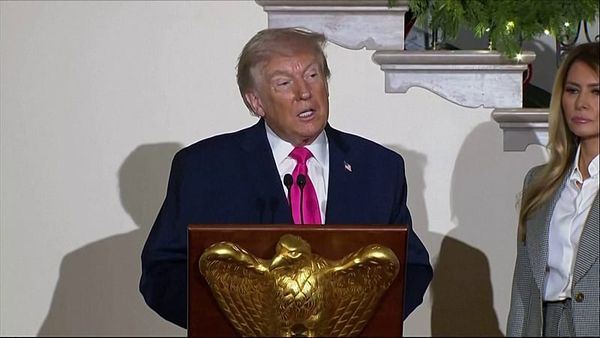
The latest White House news is that tariffs on Japan’s imports, including automobiles, have dropped to 15% — as opposed to the 27.5% they were before, per Reuters. Along with this, U.S. automakers will now have fewer restrictions on the Japanese consumer market. This is all part of a larger deal, which includes a $550 billion investment package from Japan to the U.S.
Be Aware: I’m a Mechanic — 3 Signs It’s Time To Retire Your Old Car
Check Out: Here's the Minimum Salary Required To Be Considered Upper Class in 2025
For consumers, the question becomes: How does this change affect auto prices? Here are some possibilities.
Automobile Prices Could Rise — Depending on the Maker
The average cost of a new vehicle is $47,962, according to Kelley Blue Book. However, prices are across the board with some vehicles (like sedans) having a lower purchase price than others (like larger SUVs or trucks).
According to World Bank data, the previous tariff rate on goods imported from Japan was around 2%. While the new rate of 15% is lower than President Donald Trump’s previously proposed 25% rate, the cost of Japanese automobiles could still rise.
“By directly raising the cost of imported Japanese vehicles and parts, which account for a significant share of what’s sold and serviced here, tariffs would push sticker prices up for consumers,” said Robert Khachatryan, the CEO and founder of Freight Right. “Even US-assembled Japanese-brand cars rely on Japanese-made components, so the cost increase filters through the entire supply chain.”
Read Next: 5 Japanese Cars That Will Have Massive Price Drops in the Summer of 2025
But it’s not just Japanese vehicles that could become more expensive. Non-Japanese automakers might see this as an opportunity to raise their own prices.
“Domestic and European automakers may take advantage of the higher baseline to raise their own prices, since competitive pressure softens when the cheapest imports get more expensive,” said Khachatryan.
Certain non-Japanese competitors — including major U.S. automakers that rely heavily on imports from places where tariffs are higher — could be at a disadvantage with these changes. For example, tariffs on Mexico and Canada are still at 25%. This could make Japanese automobiles the more affordable option for American consumers, at least for the time being.
Automobile prices are interconnected, though. For example, many automakers rely on parts or production in other countries. So, this change to Japan’s tariffs could impact companies across the globe.
“Automakers from other countries could benefit in the short term, particularly South Korean and European brands that don’t face the same tariff exposure,” said Khachatryan. “That said, retaliation or tariff escalation from Japan could disrupt the broader auto parts supply chain, which is deeply interconnected. No major automaker builds cars today using only local content.”
It Could — and Has — Impacted Stock Prices
Talk of tariff hikes has led to changes in share prices. With the announcement of the deal between the U.S. and Japan, stocks for Toyota and Honda both rose.
“Investors tend to price in uncertainty, and tariffs create both margin pressure and demand risk,” said Khachatryan. “If consumers delay purchases due to price hikes, or if automakers absorb the cost to stay competitive, both scenarios compress earnings and that usually gets reflected in share prices.”
The deal is still being ironed out, so long-term changes remain to be seen.
More From GOBankingRates
- 6 Costco Products That Have the Most Customer Complaints
- 5 Ways Trump Signing the GENIUS Act Could Impact Retirees
- 5 Types of Cars Retirees Should Stay Away From Buying
- 6 Big Shakeups Coming to Social Security in 2025
This article originally appeared on GOBankingRates.com: How the Tariffs on Japan Could Affect Auto Prices







